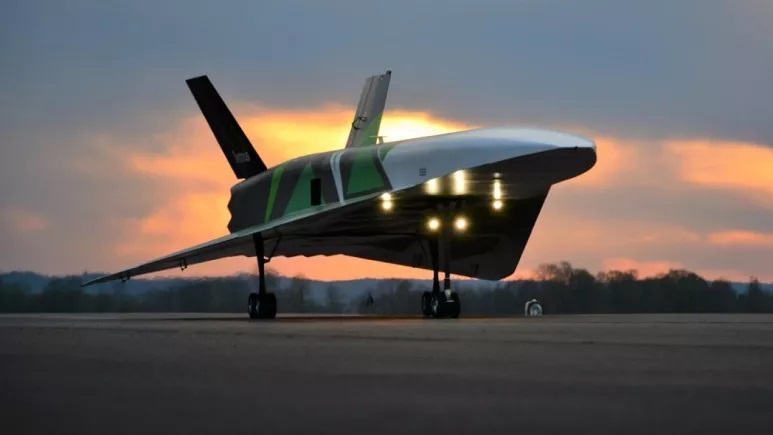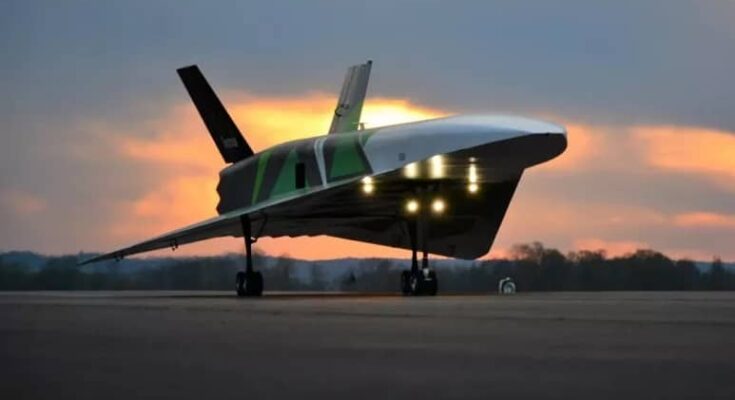
A hypersonic, hydrogen-powered passenger jet tested by a Swiss start-up is looking to cut the journey time from the US to China to three and a half hours.
Destinus has been testing its prototype aircraft for the past couple of years, announcing successful test flights of its second prototype – Eiger – at the end of 2022.
Recently the company announced participation in a program run by Spain’s Ministry of Science, as part of the Spanish government’s plans to develop hydrogen-powered supersonic flights.
The agency overseeing the ministry’s program, the Centro para el Desarrollo Tecnológico e Industrial, selected the project as a strategic initiative under its Plan de Tecnologías Aeronáuticas (PTA).
With an overall current investment of €12 million, the project involves companies and technology centres as well as Spanish universities.
“We are delighted to have been awarded these grants, especially because they are a clear sign that Destinus is aligned with the strategic lines of Spain and Europe to advance hydrogen flight,” Davide Bonetti, VP Business Development and Products for Destinus, said.
Hydrogen-powered jets can fly five times the speed of sound
During the Cold War, both the US and USSR researched liquid hydrogen as a way to fuel aircraft. Now, use of this cleaner fuel is finally around the corner.
Hydrogen power is the subject of a lot of research and development, with proponents pointing to its green credentials, the main byproducts of hydrogen combustion being heat and water.
The amount of heat generated presents a design challenge. Researchers at RMIT University in Melbourne recently developed 3D printed catalysts which they say can power hypersonic flight and act as a cooling agent to combat the extreme heat generated when aircraft fly at five times the speed of sound, which is around 6,100 kilometres per hour (km/h).
At those speeds, future commercial airlines would be able to fly between London and New York in around 90 minutes.
Swiss start-up Destinus claims its technology will make a flight from Frankfurt to Sydney last just 4 hours 15 minutes as opposed to 20 hours, while a flight from Frankfurt to Shanghai would take 2 hours 45 minutes, eight hours shorter than that journey currently takes.
Destinus partnered with Spanish engine manufacturer ITP Aero in June 2022 to develop a hydrogen engine test facility. The grant from the Spanish government will fund the construction of a test facility near Madrid where the air-breathing hydrogen engines will be put through their paces.
A second grant project of €15 million will fund research into aspects of liquid hydrogen-powered propulsion.
The company says that with velocities more than 5 times the speed of sound, you can reach the other side of the world in 3-4 hours without compromising on versatility, cost, or noise.
UK funds new project
Recently, the British government announced it is funding a new concept aircraft fueled by liquid hydrogen. The aircraft will contribute to reaching zero carbon emissions flight using its innovative energy source.
The project, known as FlyZero, is being headed by the Aerospace Technology Institute (ATI).
ATI has created a midsize aircraft capable of taking 279 passengers halfway across the planet without making a single stop. The aircraft can go to any destination in the world with only one stop in between.
Airbus has also unveiled three concepts for liquid hydrogen-powered aircraft, one of which could enter service by 2035. They are a rather conventional-looking short-haul turboprop and an intercontinental jet airliner, as well as a more radical blended wing that looks more like a spacecraft.



